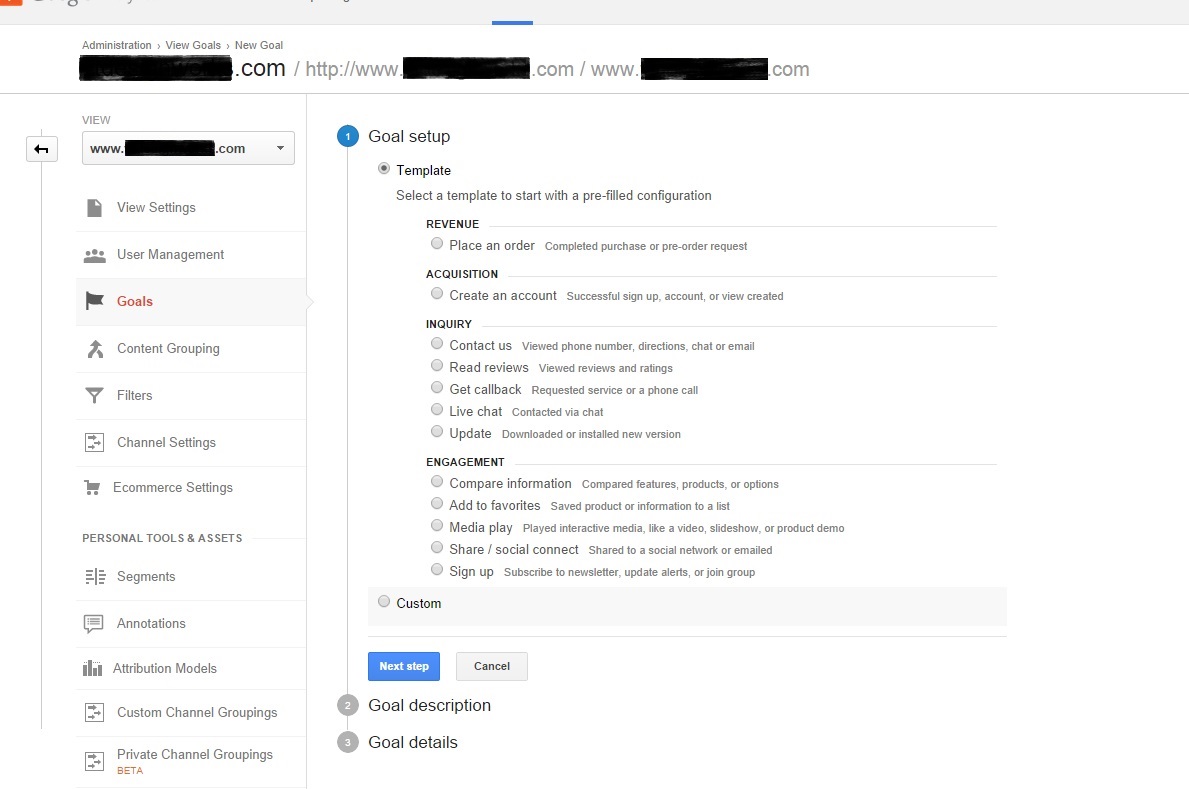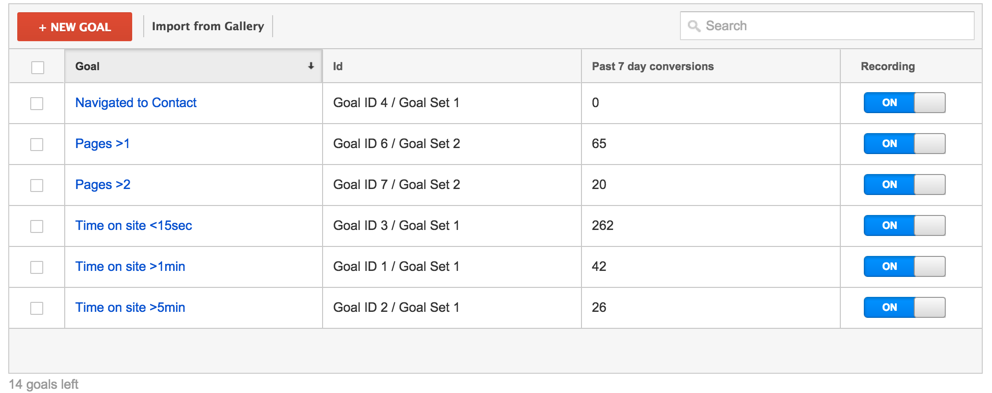What Data Is Google Analytics Goals Unable to Track: Critical Information
What Data Is Google Analytics Goals Unable to Track: Critical Information
Blog Article
Discover the Limitations of Google Analytics Goals: Revealing the Information Types That Remain Untrackable
As companies progressively count on data-driven decision-making, comprehending the limitations of tools like Google Analytics comes to be vital. While Google Analytics Goals offer valuable insights right into individual communications, there exist data kinds that elude tracking, posturing difficulties to a comprehensive understanding of individual actions. These untrackable data kinds question regarding the accuracy and efficiency of the analytics information that organizations heavily count upon for their digital strategies. Curious to discover the surprise blind spots in your data evaluation procedure?
Incomplete Individual Trip Tracking
Incomplete customer journey monitoring within Google Analytics can prevent the capacity to accurately evaluate individual actions. When the individual trip is not fully tracked, there are spaces in the information that stop a detailed understanding of how users communicate with a site. This lack of insight can lead to missed chances for optimization and improvements to the user experience.
One common concern with insufficient customer trip monitoring is the failure to see the full path that users take in the past finishing an objective or leaving the website. Without this info, it is challenging to identify where customers might be encountering challenges or rubbing points that avoid them from transforming. In addition, insufficient monitoring can obscure the influence of particular advertising efforts or website adjustments on user actions.
To resolve this limitation, it is important to establish proper monitoring mechanisms within Google Analytics to record the entire user trip. This might include setting up occasion monitoring, goal funnels, or making use of tools like Google Tag Manager to ensure that no crucial interactions go unrecorded. By gaining a comprehensive sight of the individual journey, web site owners can make more informed choices to boost customer interaction and drive conversions.
Acknowledgment Challenges
Navigating with acknowledgment obstacles in Google Analytics calls for a comprehensive understanding of exactly how different touchpoints contribute to the general conversion process. Attribution difficulties develop from the intricacy of contemporary consumer trips, where customers interact with multiple channels before converting.
One common attribution challenge is the problem in attributing conversions to the right resource, especially in cases where users connect with several channels before transforming. This can bring about errors in determining which marketing initiatives are driving one of the most conversions. Furthermore, cross-device tracking poses another acknowledgment challenge, as customers typically change between tools during their journey, making it testing to track their communications perfectly. Marketing professionals need to very carefully analyze and examine attribution data to make enlightened choices and enhance their marketing techniques efficiently.
Offline Conversions
Offered the difficulties related to associating conversions accurately in online channels, the dimension of offline conversions provides a substantial opportunity for marketers looking for an extra comprehensive understanding of their clients' journey. Offline conversions refer to activities that customers take in the physical globe, such as making acquisitions in brick-and-mortar stores or over the phone, going to occasions, or engaging with printed products - what data is google analytics goals unable to track. These conversions are important for businesses that operate both online and offline, as they supply valuable insights right into the effectiveness of advertising projects throughout various touchpoints
Tracking offline conversions commonly positioned a substantial challenge for marketing experts, as it was testing to attach these actions back to certain online interactions helpful site precisely. With innovations in technology, such as the assimilation of CRM systems, special identifiers, and promo code codes, businesses can currently connect the void in between online and offline information to obtain a much more alternative view of customer habits. By efficiently gauging offline conversions, marketing experts can optimize their techniques, designate sources much more successfully, and ultimately enhance the total client experience.
Cross-Device Tracking
Cross-device monitoring plays a crucial role in recognizing the interconnected nature of consumers' digital interactions throughout multiple gadgets. In today's omnichannel world, where customers perfectly switch between tablet computers, desktops, and mobile phones, tracking their actions throughout these tools is essential for marketers to get an extensive sight of their customer trip.

In addition, personal privacy concerns and policies such as GDPR and CCPA have better complex cross-device monitoring. With users demanding more control over their data and boosted constraints on tracking innovations, marketers should find ingenious and privacy-compliant methods to link individual interactions across devices.
Dynamic Content Involvement
Recognizing customer involvement with vibrant material is essential in enhancing digital advertising methods for improved audience interaction. Dynamic web content describes web site aspects that transform based on customer habits, preferences, or various other factors, providing a tailored experience. Tracking individual interactions with vibrant material positions challenges for typical analytics tools like Google Analytics.
While Google Analytics can track basic communications like clicks go to my site and page sights, it may struggle to record even more nuanced engagements within vibrant content. what data is google analytics goals unable to track. Metrics such as time invested in details dynamic elements, float actions, or communications within pop-ups are often not conveniently measurable making use of common tracking methods. This limitation prevents marketers' capacity to completely grasp how users are involving with vibrant web content and tailor their approaches appropriately

Verdict
Finally, Google Analytics goals have limitations in tracking insufficient individual trips, associating conversions precisely, recording offline conversions, tracking cross-device communications, and gauging dynamic content interaction. These restraints highlight the importance of discovering additional monitoring approaches and devices to gain a more extensive understanding of user behavior and conversions beyond what Google Analytics can supply.
While Google Analytics Goals offer beneficial insights into individual communications, there exist information kinds that avoid tracking, positioning obstacles to a comprehensive understanding of individual behavior.Incomplete user journey monitoring within Google Analytics can hinder the ability to properly examine individual read review habits. When the user trip is not totally tracked, there are spaces in the data that avoid an extensive understanding of how customers engage with a web site.One usual problem with incomplete user trip tracking is the failure to see the full path that users take before completing an objective or leaving the site. By gaining a comprehensive view of the individual journey, web site proprietors can make more educated decisions to enhance individual engagement and drive conversions.
Report this page